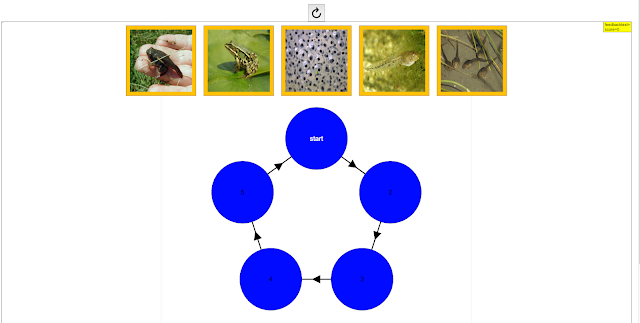https://iwant2study.org/moodle402/mod/laejss/view.php?id=38
Translations
| Code | Language | Translator | Run | |
|---|---|---|---|---|
 |
||||
Credits


 lookang; Felix J. Garcia Clemente; Francisco Esquembre
lookang; Felix J. Garcia Clemente; Francisco Esquembre
Main Themes:
- Understanding Life Cycles as Repeated Patterns: The core theme revolves around the concept of life cycles as "repeated patterns of change in nature." This is explicitly stated multiple times:
- "Cycles There are repeated patterns of change in nature. Examples of these cycles are the life cycles of living things and the water cycle."
- "About Cycles: There are repeated patterns of change in nature. Examples of these cycles are the life cycles of living things and the water cycle."
- Importance of Understanding Cycles: The resource emphasizes the value of understanding these cycles for prediction and appreciating natural systems:
- "Understanding these cycles helps Man to predict events and processes and to appreciate the Earth as a self-sustaining system."
- "Observing cycles helps us to make predictions and understand things around us."
- Focus on Specific Animal Life Cycles: The resource specifically provides interactive learning tools for the life cycles of the frog, human, chicken, grasshopper, and cockroach. Links are provided for each of these animals, suggesting a drag-and-drop quiz format where users can learn about the different stages.
- The title itself, "Life cycle of 3 Cycles only for Frog, Human, Chicken, Grasshopper, Cockroach Drag and Drop Quiz HTML5," clearly indicates this focus.
- Direct links are provided for "The life cycle of the Frog (Egg, Young and Adult)," "The life cycle of the Human (Egg, Young and Adult)," "The life cycle of the chicken (Egg, Young and Adult)," "The life cycle of the Grasshopper (Egg, Nymph and Adult)," and "The life cycle of the Cockroach (Egg, Nymph and Adult)."
- Interactive Learning as a Pedagogical Approach: The resource is presented as an "Interactive Resource" utilizing HTML5 and JavaScript. The mention of a "Drag and Drop Quiz" further highlights the active learning approach intended for users. The "Embed" option suggests the resource is designed to be integrated into various online learning environments.
- Alignment with Educational Goals: The resource is linked to "Primary 4 Science" curriculum in Singapore, specifically mentioning "Cycles in plants and animals (Lifecycles)." The provided reference to the Ministry of Education syllabus (www.moe.gov.sg) indicates its relevance to formal education. The syllabus aims to encourage "more engaging teaching and learning approaches" and enable teachers to make learning "more meaningful and enjoyable."
- Exploration and Responsibility towards Nature: The Primary 4 Science syllabus excerpt also mentions broader learning goals beyond just understanding cycles, such as encouraging students to:
- "Observe and compare the life cycles of animals over a period of time (butterfly, beetle, mosquito, grasshopper, cockroach, chicken, frog)."
- "Show curiosity in exploring the surrounding plants and animals and question what they find."
- "Show concern by being responsible towards plants and animals such as their own pets."
- Open Educational Resource and Credits: The platform is identified as "Open Educational Resources / Open Source Physics @ Singapore," suggesting the materials are freely available for educational use. Credits are given to lookang, Felix J. Garcia Clemente, and Francisco Esquembre for their work on the resource. The compilation with "EJS 6.1 BETA" is also noted.
Most Important Ideas and Facts:
- Definition of a Cycle: A cycle is a "repeated pattern of change in nature."
- Purpose of Studying Cycles: Understanding cycles allows for prediction of events and processes and fosters an appreciation of the Earth as a self-sustaining system.
- Specific Life Cycles Covered: The interactive quiz focuses on the life cycles of the frog, human, chicken, grasshopper, and cockroach.
- Developmental Stages: The brief descriptions of the life cycles indicate different stages: Egg, Young, and Adult for frog, human, and chicken; and Egg, Nymph, and Adult for grasshopper and cockroach.
- Target Audience: The resource is designed for primary school science education, particularly Primary 4 in Singapore.
- Interactive Format: The resource utilizes a drag-and-drop quiz format built with HTML5, making it interactive and engaging for students.
- Open Source Nature: The resource is part of an open educational resource initiative, making it potentially accessible for wider use and adaptation.
- Alignment with Curriculum: The content aligns with the science curriculum in Singapore, aiming to make learning about life cycles more meaningful.
Quotes:
- "Cycles There are repeated patterns of change in nature."
- "Understanding these cycles helps Man to predict events and processes and to appreciate the Earth as a self-sustaining system."
- "Observe and compare the life cycles of animals over a period of time (butterfly, beetle, mosquito, grasshopper, cockroach, chicken, frog)."
Conclusion:
The provided sources highlight an interactive and open educational resource designed to teach primary school students about the life cycles of specific animals. The emphasis is on understanding life cycles as recurring patterns in nature and recognizing their importance for prediction and ecological awareness. The drag-and-drop quiz format and alignment with the curriculum suggest a tool intended to make learning engaging and effective. The inclusion of broader educational aims, such as fostering curiosity and responsibility towards living things, further underscores the value of this resource.
Life Cycles of Frog, Human, Chicken, Grasshopper, and Cockroach: A Study Guide
Quiz
Answer the following questions in 2-3 sentences each.
- What is meant by a life cycle in the context of living things?
- According to the provided text, why is understanding life cycles considered important?
- What are the three main stages identified in the life cycle of a frog?
- What are the three main stages identified in the life cycle of a human?
- What are the three main stages identified in the life cycle of a chicken?
- How does the life cycle of a grasshopper differ from that of a chicken based on the stages mentioned in the text?
- What term is used to describe the young stage in the life cycle of a grasshopper and a cockroach?
- Besides the five organisms mentioned in the title, list three other animals whose life cycles are mentioned in the provided resource.
- The text mentions "repeated patterns of change." Give an example of a cycle in nature other than a life cycle that is mentioned in the text.
- What skills or attitudes does the Singapore primary science syllabus aim to foster in students when exploring the life cycles of plants and animals?
Answer Key for Quiz
- A life cycle refers to the series of changes in form that an organism undergoes, returning to the starting state. It is a repeated pattern of development and reproduction that characterizes the existence of a living thing.
- Understanding life cycles helps humans to predict events and processes in nature. It also allows us to appreciate the Earth as a self-sustaining system by recognizing these repeated patterns of change.
- The three main stages in the life cycle of a frog, as mentioned in the text, are egg, young, and adult. This represents the basic transformation from fertilized egg to a juvenile and finally to a mature, reproductive frog.
- Similar to the frog, the life cycle of a human is also described in the text as having three main stages: egg (referring to the fertilized ovum), young (childhood and adolescence), and adult (mature, reproductive stage).
- The life cycle of a chicken is also characterized by three main stages according to the text: egg, young (chick), and adult (mature, egg-laying hen or rooster).
- The life cycle of a grasshopper includes the stages egg, nymph, and adult, while the chicken's life cycle includes egg, young, and adult. The presence of a nymph stage, which is an immature form resembling a smaller version of the adult, distinguishes the grasshopper's development.
- The term used to describe the young stage in the life cycle of both the grasshopper and the cockroach, according to the text, is nymph. This indicates a stage of incomplete metamorphosis where the young resemble smaller adults and gradually develop through molting.
- Besides the frog, human, chicken, grasshopper, and cockroach, the resource also mentions the life cycles of the butterfly (egg, larva, pupa, adult), beetle (egg, larva, pupa, adult), and mosquito (egg, larva, pupa, adult).
- Besides the life cycles of living things, the text explicitly mentions the water cycle as another example of a repeated pattern of change in nature. This highlights the broader concept of cycles beyond just biological development.
- The Singapore primary science syllabus aims to foster curiosity in exploring the surrounding plants and animals, encourage questioning of observations, promote concern and responsibility towards living things (like pets), and value individual effort and teamwork in students studying life cycles.
Essay Format Questions
- Compare and contrast the life cycles of the frog and the grasshopper, focusing on the key developmental stages and the significance of these differences.
- Discuss the importance of understanding life cycles, as highlighted in the provided text, and elaborate on how this knowledge can contribute to a broader appreciation of natural processes.
- Based on the information provided, analyze the different patterns of life cycles presented by the frog/human/chicken group versus the grasshopper/cockroach group, and discuss potential evolutionary reasons for these variations.
- The text emphasizes the role of observing cycles in making predictions. Choose one of the mentioned organisms and explain how understanding its life cycle can help in predicting related events or processes.
- Considering the learning goals for "Cycles" outlined in the text, design a short lesson plan for primary school students that incorporates the life cycles of at least two different organisms mentioned in the source material, aiming to address the essential takeaways and key inquiry questions.
Glossary of Key Terms
- Life Cycle: The series of changes in form that an organism undergoes, returning to the starting state and involving stages of development and reproduction.
- Cycle: A repeated pattern of change in nature or in a process.
- Egg: The first stage in the life cycle of many animals, typically containing a developing embryo.
- Young: A juvenile stage in an organism's life, after hatching or birth and before reaching full maturity (also sometimes referred to as larva or nymph).
- Adult: The fully developed, mature stage of an organism's life cycle, typically capable of reproduction.
- Nymph: An immature stage in the life cycle of some insects (like grasshoppers and cockroaches) that resembles a smaller version of the adult and undergoes gradual changes through molting.
- Larva: An immature, often worm-like stage in the life cycle of some insects (like beetles and butterflies) that is very different in form from the adult.
- Pupa: A transformation stage in the life cycle of some insects (like beetles and butterflies) during which the larva changes into an adult.
- Metamorphosis: A biological process by which an animal physically develops after birth or hatching, involving a conspicuous and relatively abrupt change in the animal's body structure through cell growth and differentiation. Can be complete (e.g., butterfly) or incomplete (e.g., grasshopper).
- Open Educational Resources (OER): Teaching, learning, and research materials that are freely available for everyone to use, adapt, and share.
- HTML5: The latest evolution of the standard that defines HTML, used for structuring and presenting content on the World Wide Web, and often used for interactive elements and simulations.
https://iwant2study.org/moodle402/mod/laejss/view.php?id=38
Sample Learning Goals
Cycles There are repeated patterns of change in nature. Examples of these cycles are the life cycles of living things and the water cycle. Understanding these cycles helps Man to predict events and processes and to appreciate the Earth as a self-sustaining system. The essential takeaways and key inquiry questions for “Cycles” are: Essential Takeaways Key Inquiry Questions There are repeated patterns of change around us. Observing cycles helps us to make predictions and understand things around us. What makes a cycle? Why are cycles important to life?
Primary 4 Science
Cycles
Cycles in plants and animals (Lifecycles)
The freed up curriculum time is to enable teachers to use more engaging teaching and learning approaches, and/or to implement customised schoolbased programmes as long as the aims of the syllabus are met. This enables teachers to make learning more meaningful and enjoyable for their students.
About Cycles: There are repeated patterns of change in nature. Examples of these cycles are the life cycles of living things and the water cycle. Understanding these cycles helps Man to predict events and processes and to appreciate the Earth as a self-sustaining system.
*Observe and compare the life cycles of animals over a period of time (butterfly, beetle, mosquito, grasshopper, cockroach, chicken, frog).
*Show curiosity in exploring the surrounding plants and animals and question what they find. *Show concern by being responsible towards plants and animals such as their own pets. *Value individual effort and team work.
For Teachers
Life Cycle of Frog Drag and Drop Quiz HTML5
|
https://sg.iwant2study.org/ospsg/index.php/interactive-resources/biology/846-lifecycleanimals |
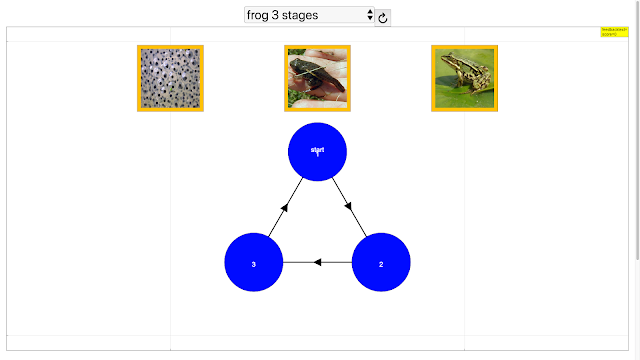 |
| The life cycle of the Frog Egg, Young and Adult https://sg.iwant2study.org/ospsg/index.php/interactive-resources/biology/846-lifecycleanimals |
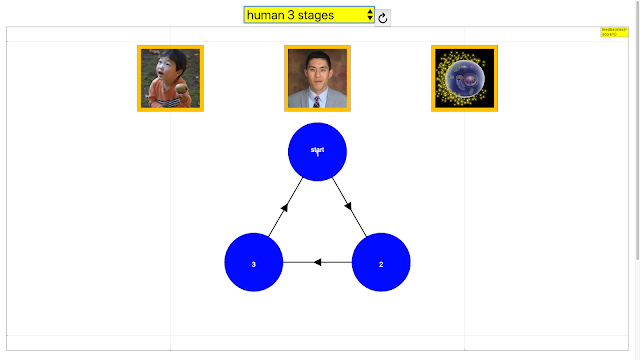 |
| The life cycle of the Human Egg, Young and Adult https://sg.iwant2study.org/ospsg/index.php/interactive-resources/biology/846-lifecycleanimals |
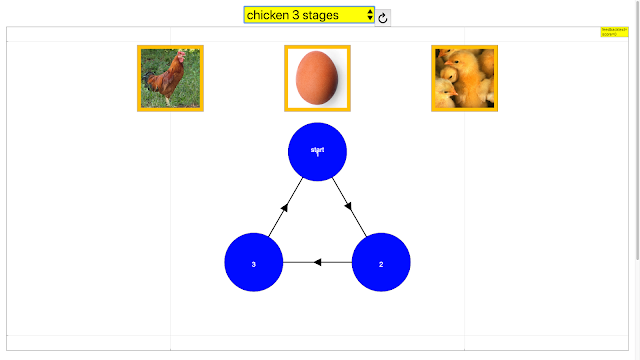 |
| The life cycle of the chicken Egg, Young and Adult https://sg.iwant2study.org/ospsg/index.php/interactive-resources/biology/846-lifecycleanimals |
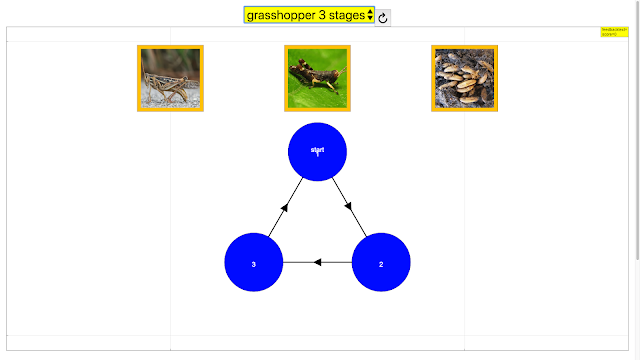 |
| The life cycle of the Grasshopper Egg, Nymph and Adult https://sg.iwant2study.org/ospsg/index.php/interactive-resources/biology/846-lifecycleanimals |
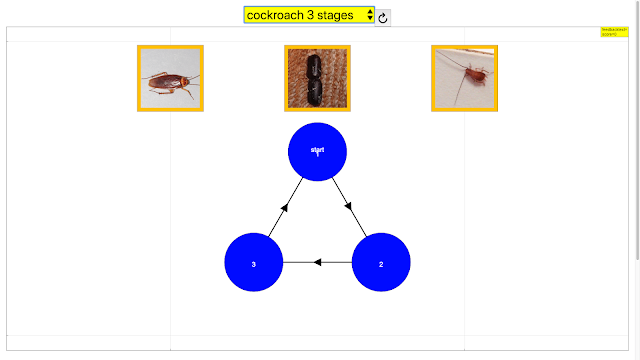 |
| The life cycle of the Cockroach Egg, Nymph and Adult https://sg.iwant2study.org/ospsg/index.php/interactive-resources/biology/846-lifecycleanimals |
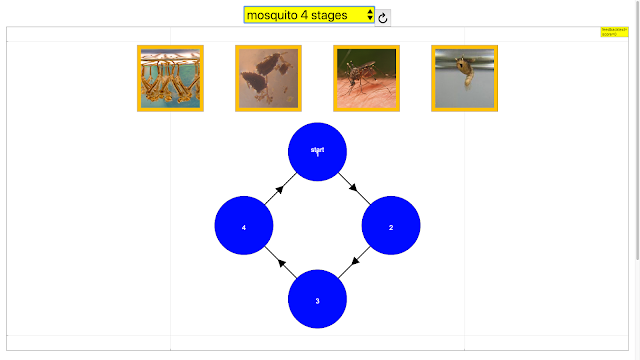 |
| The life cycle of the mosquito Egg, Nymph and Adult https://sg.iwant2study.org/ospsg/index.php/interactive-resources/biology/846-lifecycleanimals |
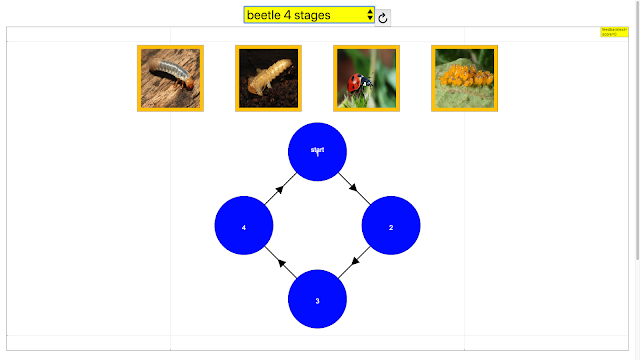 |
| The life cycle of the beetle Egg, Larva, Pupa and Adult https://sg.iwant2study.org/ospsg/index.php/interactive-resources/biology/846-lifecycleanimals |
 |
| The life cycle of the butterfly Egg, Larva, Pupa and Adult https://sg.iwant2study.org/ospsg/index.php/interactive-resources/biology/846-lifecycleanimals |
Research
[text]
Video
https://www.youtube.com/watch?v=p0RnVLP25vo
Version:
Other Resources
[text]
Frequently Asked Questions: Life Cycles
1. What is a life cycle in the context of living things?
A life cycle refers to the series of stages that a living organism goes through during its lifetime. These stages represent repeated patterns of change in nature, from birth or hatching to reproduction and eventually death. Understanding these cycles involves observing and recognizing the distinct phases an organism experiences.
2. Why is understanding life cycles considered important?
Understanding life cycles is important for several reasons. Firstly, it allows us to predict events and processes in the natural world. By recognizing the patterns in life cycles, we can anticipate when certain stages will occur. Secondly, it helps us appreciate the Earth as a self-sustaining system, where different biological processes are interconnected and cyclical. For educators, understanding life cycles can also enable more engaging and meaningful teaching and learning approaches in science.
3. What are some examples of life cycles mentioned in the sources?
The sources specifically mention the life cycles of several animals, including the frog, human, chicken, grasshopper, cockroach, mosquito, beetle, and butterfly. It also generally refers to cycles in plants and the water cycle as other examples of repeated patterns of change in nature.
4. Are the life cycles of all animals the same?
No, the life cycles of animals can vary significantly. The provided resources highlight different patterns, such as Egg, Young, and Adult stages (for frog, human, and chicken), Egg, Nymph, and Adult stages (for grasshopper, cockroach, and mosquito), and Egg, Larva, Pupa, and Adult stages (for beetle and butterfly). These variations demonstrate the diversity of developmental processes in the animal kingdom.
5. What are the different stages commonly observed in animal life cycles?
Based on the examples provided, common stages in animal life cycles include the egg stage (the starting point for many), followed by a young stage (which can be a nymph, larva, or simply a juvenile), and finally the adult stage, where the organism is typically capable of reproduction. Some animals, like beetles and butterflies, also have intermediate stages such as larva and pupa, representing more complex transformations.
6. What can be learned by observing and comparing the life cycles of different animals?
Observing and comparing the life cycles of different animals can reveal fascinating insights into their development, adaptations, and ecological roles. It allows us to see different strategies for growth, maturation, and reproduction. For example, comparing an animal with a nymph stage to one with a larval and pupal stage illustrates different forms of metamorphosis. Such comparisons can enhance our understanding of biodiversity and evolutionary processes.
7. How can interactive resources, like the ones mentioned, aid in learning about life cycles?
Interactive resources, such as drag-and-drop quizzes and simulations, can make learning about life cycles more engaging and effective. These tools allow learners to actively participate in the learning process by manipulating elements, observing changes, and testing their understanding. This hands-on approach can foster deeper comprehension and make the learning experience more enjoyable, aligning with educational goals of promoting meaningful and enjoyable learning.
8. What role do teachers play in facilitating the learning of life cycles?
Teachers play a crucial role in facilitating the learning of life cycles by utilizing engaging teaching methods and resources. The freed-up curriculum time mentioned in the context suggests an opportunity for teachers to use more interactive and customized approaches to help students observe, compare, and understand the life cycles of various organisms. Teachers can also encourage curiosity, questioning, and responsible attitudes towards plants and animals.
- Details
- Written by Loo Kang Wee
- Parent Category: Interactive Resources
- Category: Biology
- Hits: 6518


.png
)






